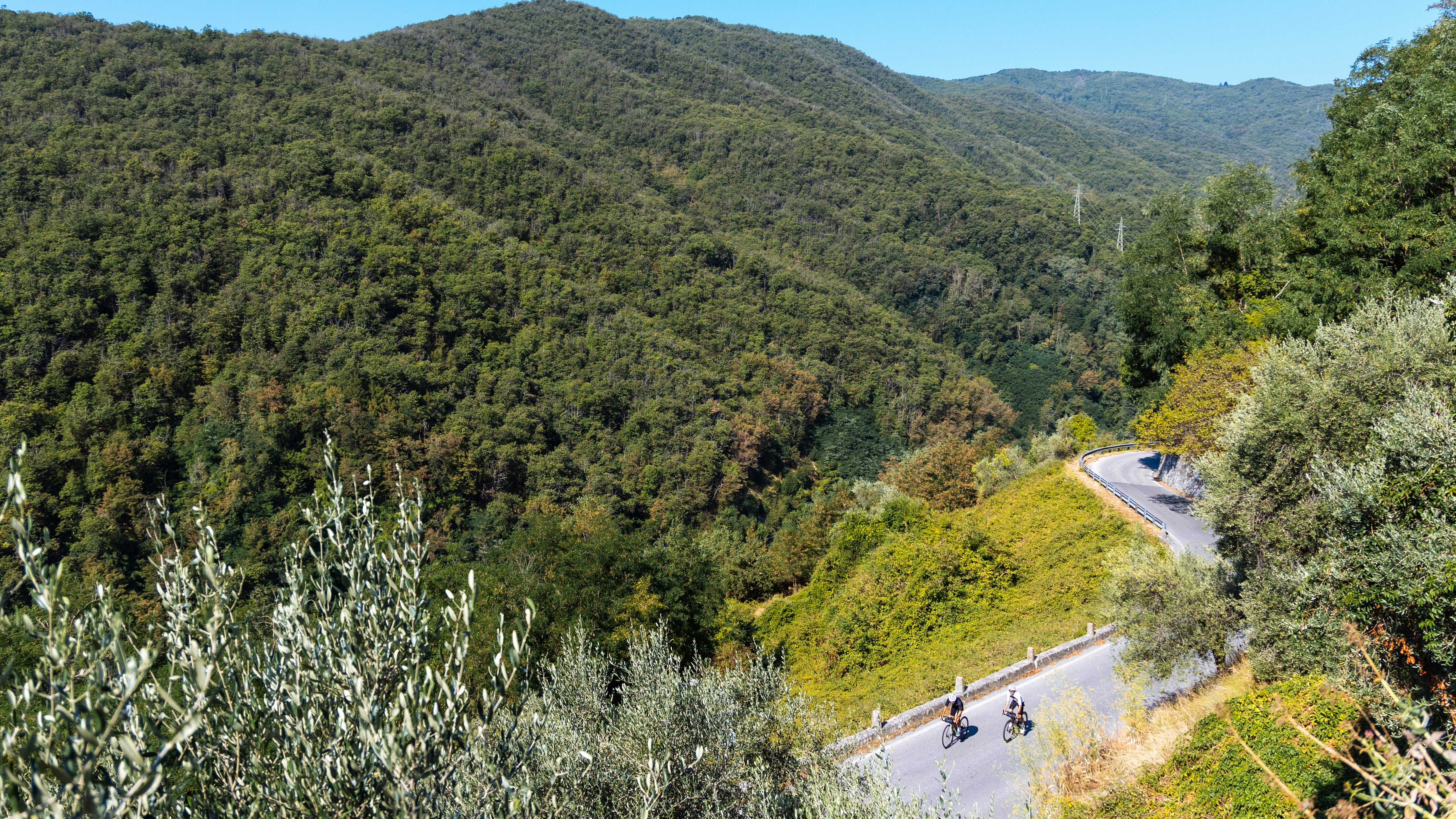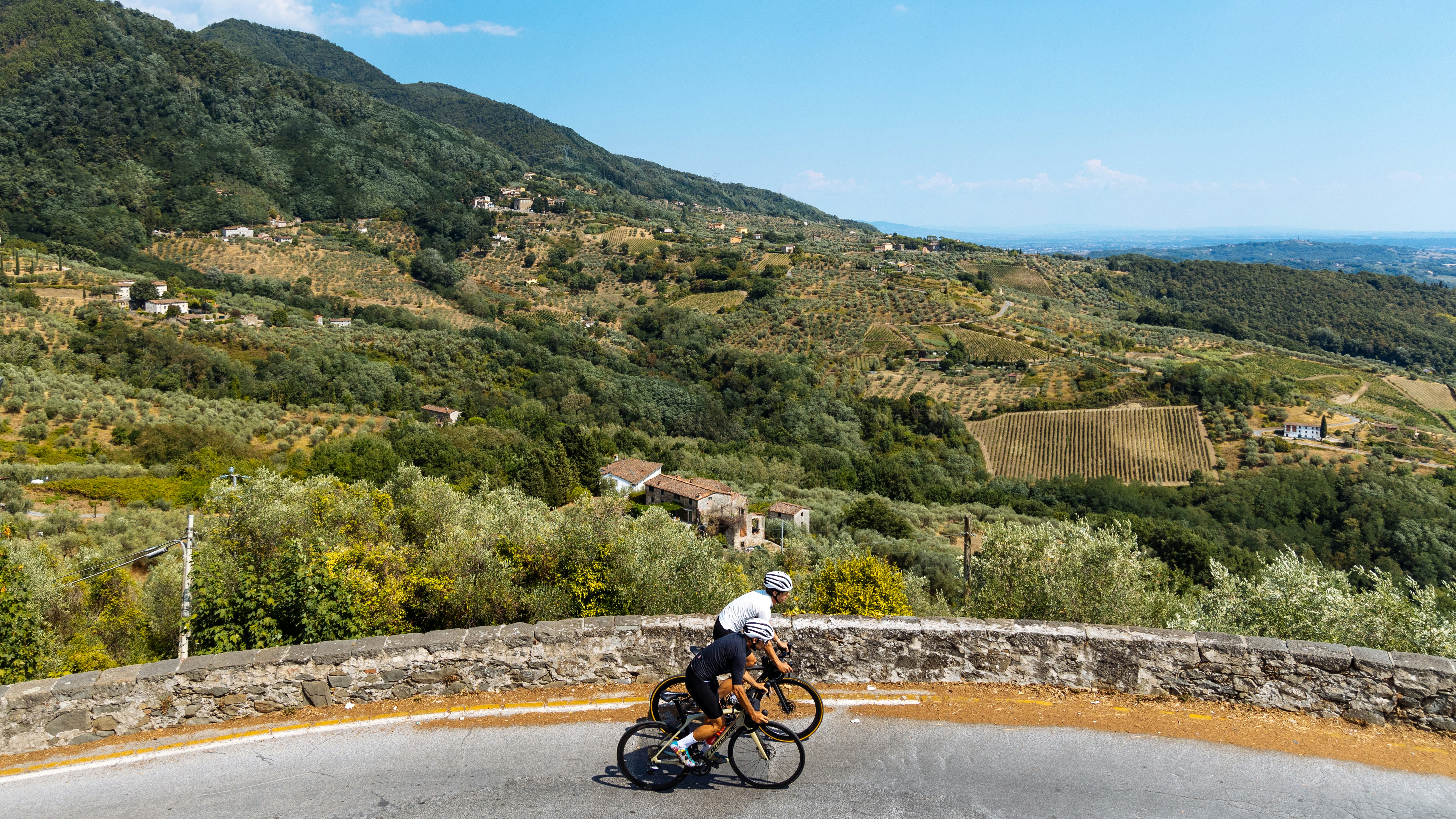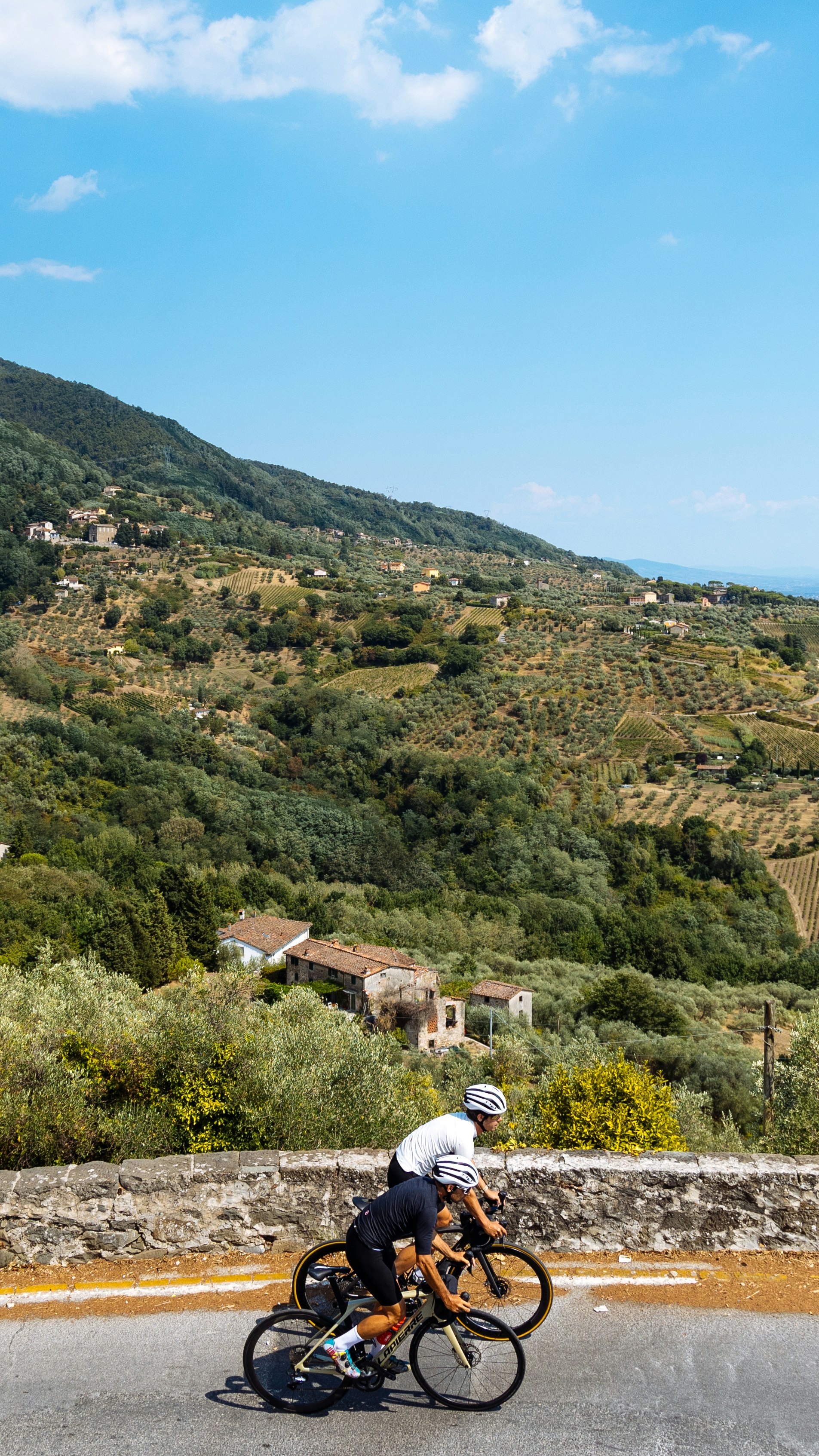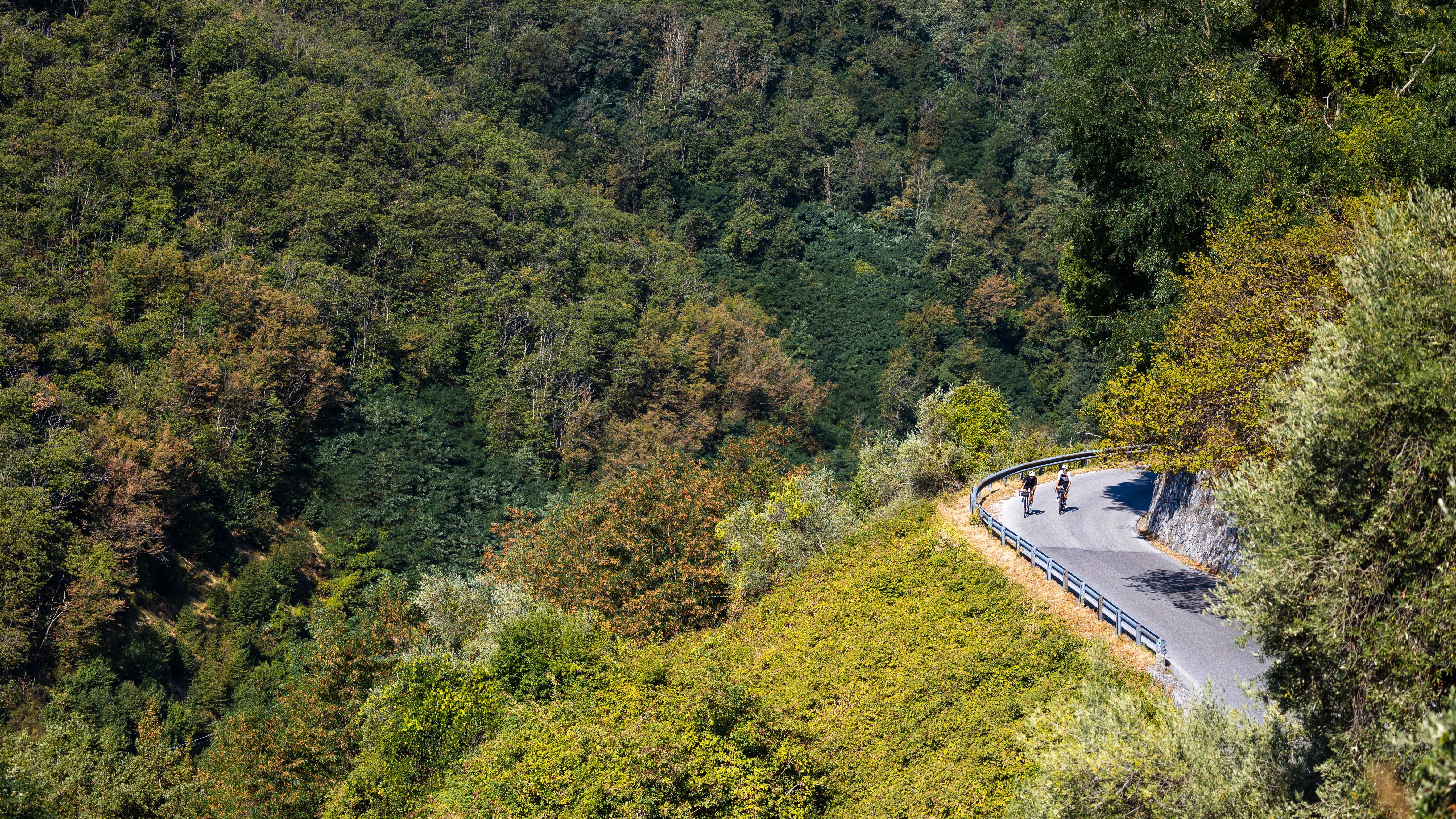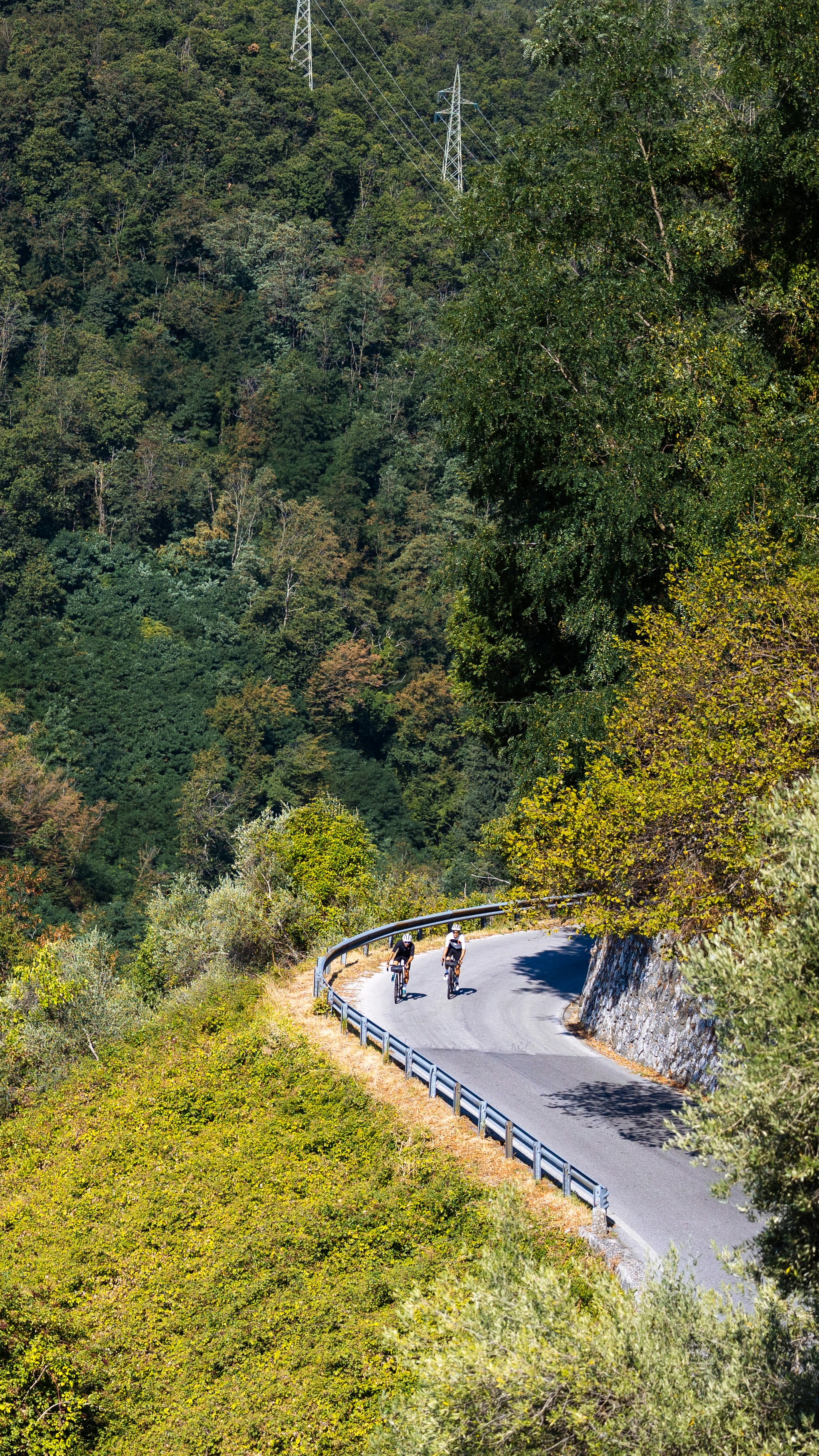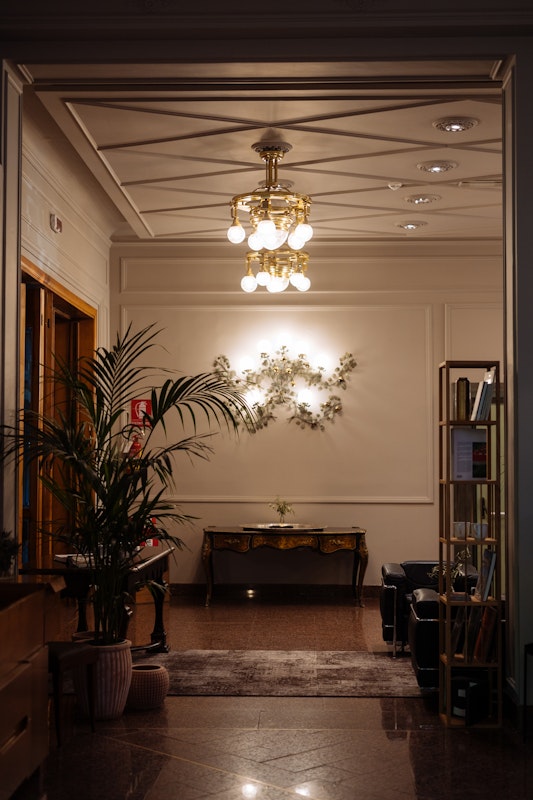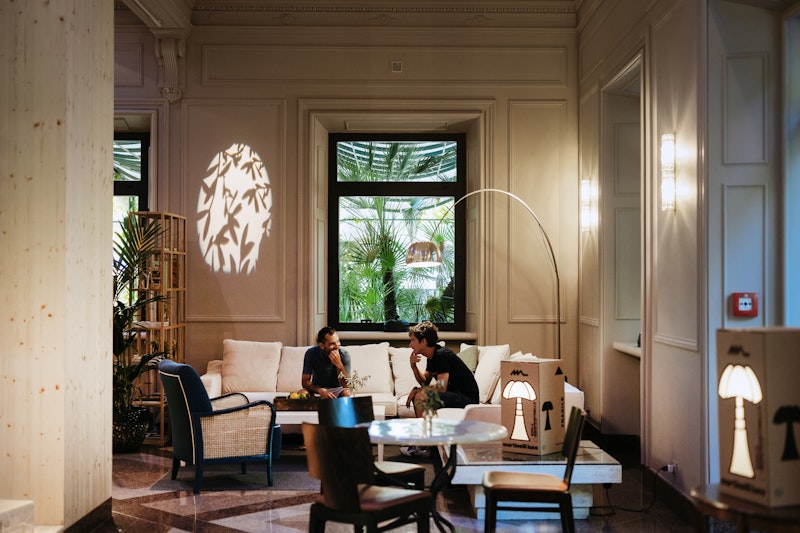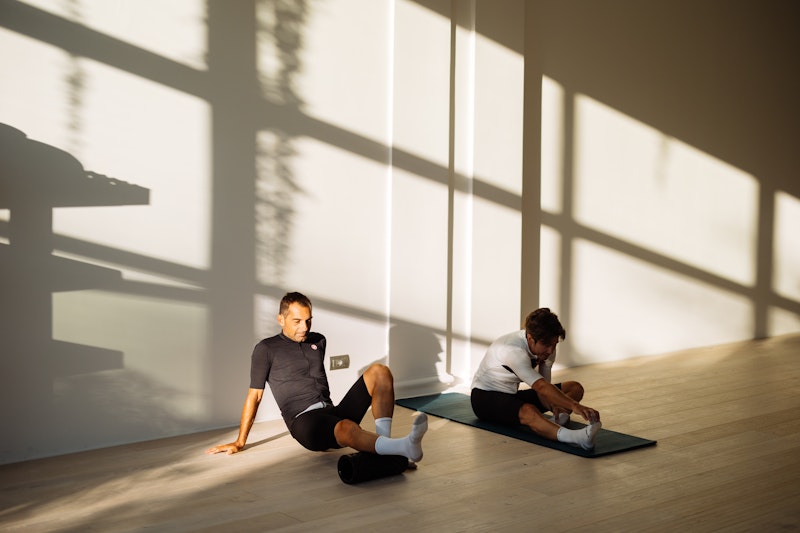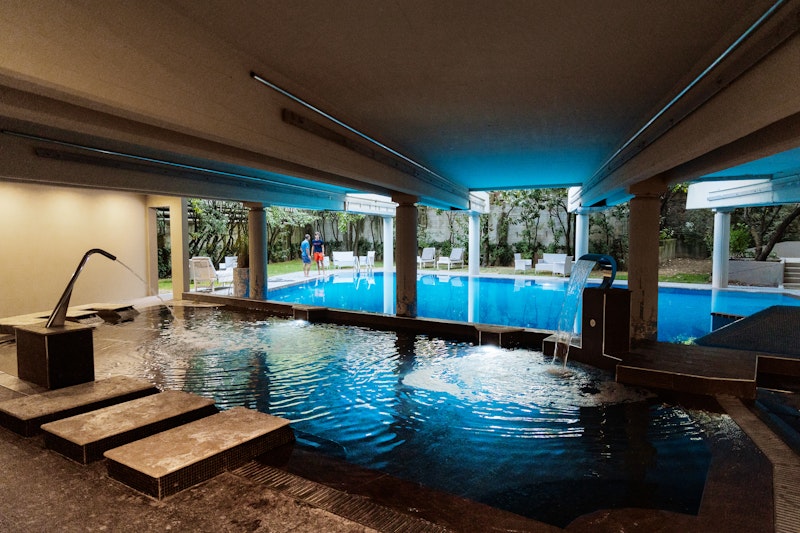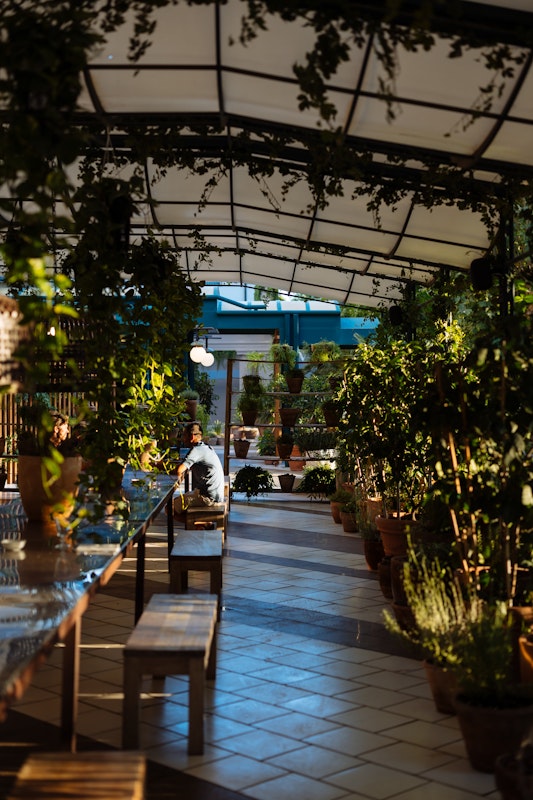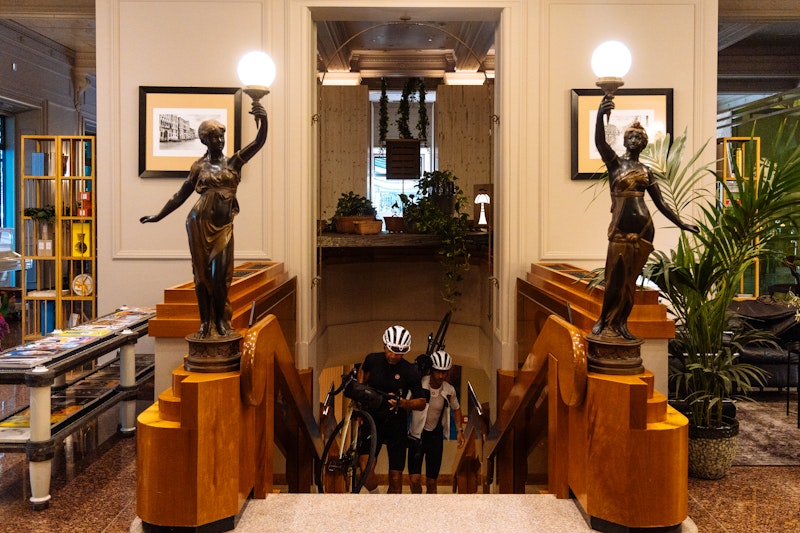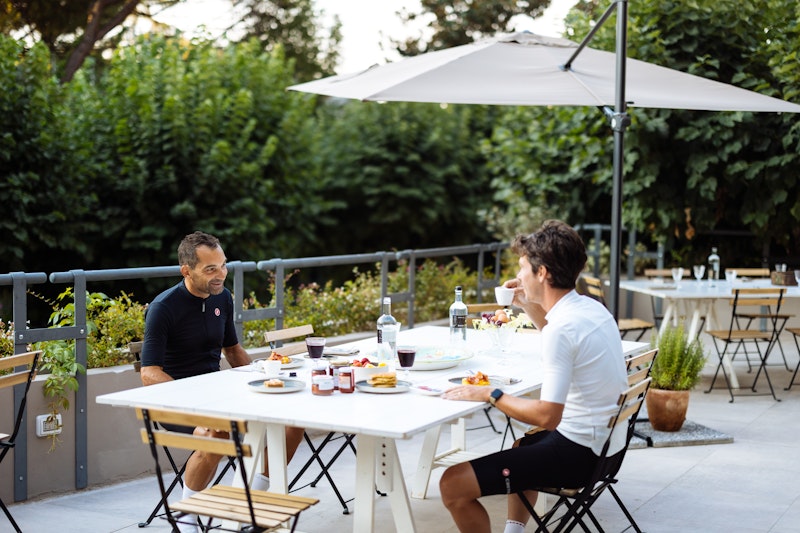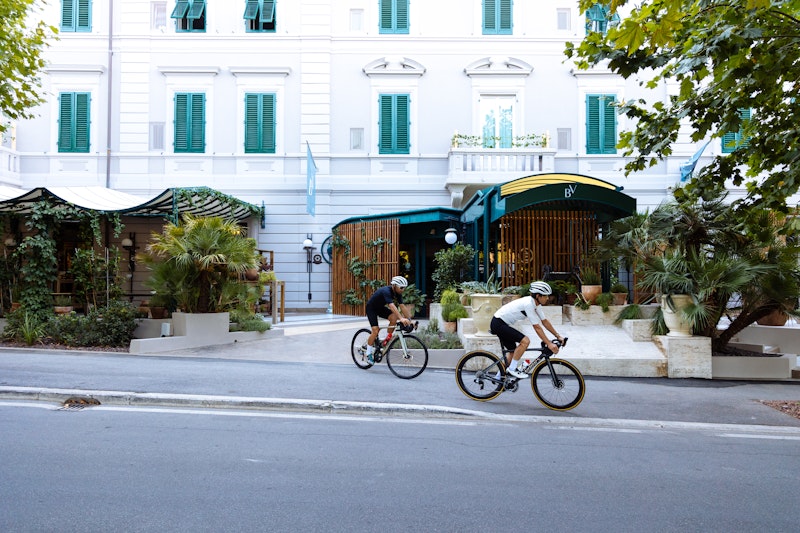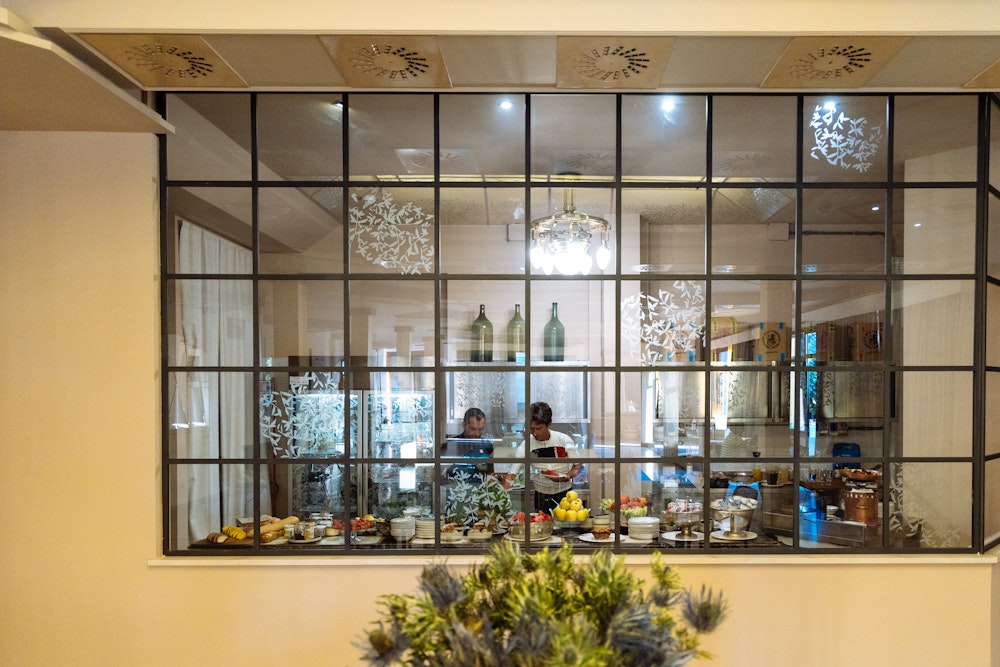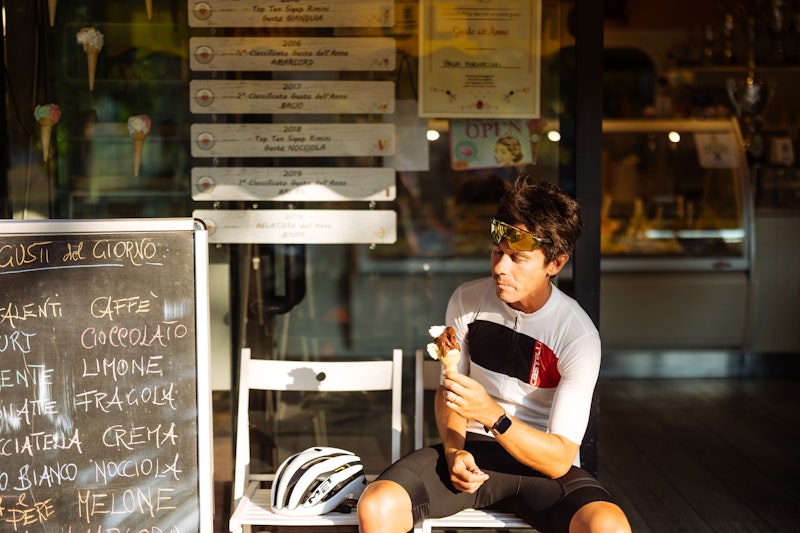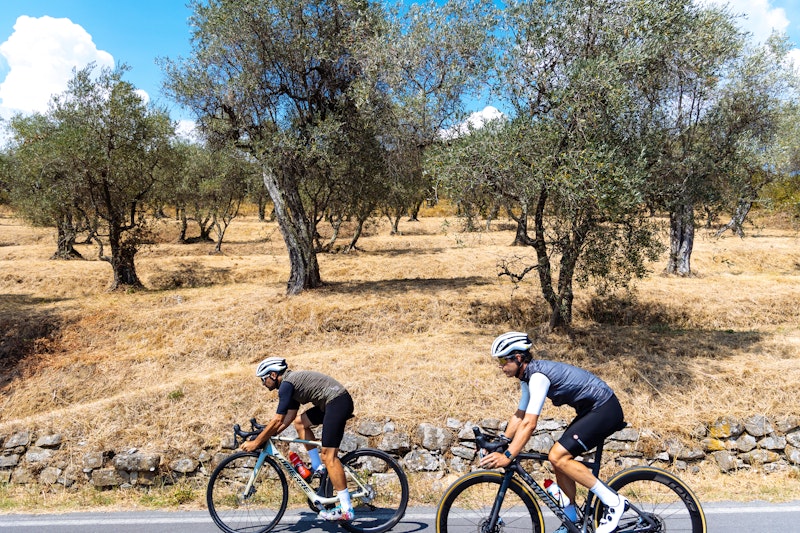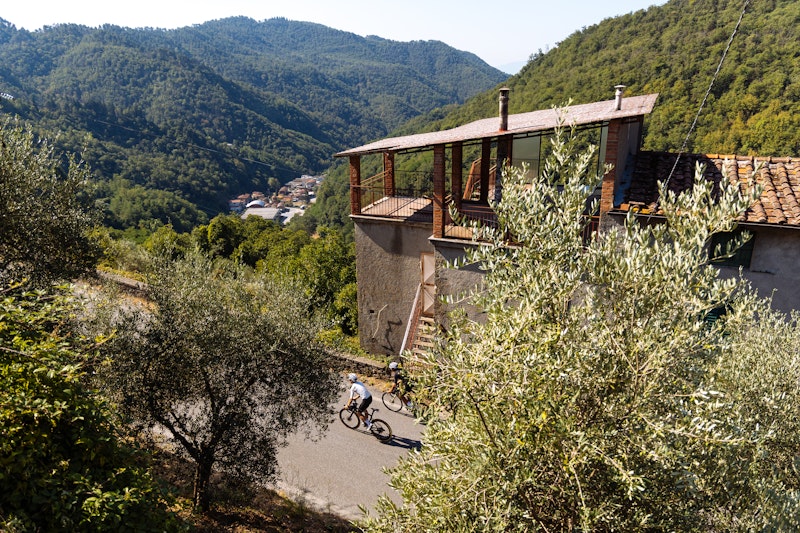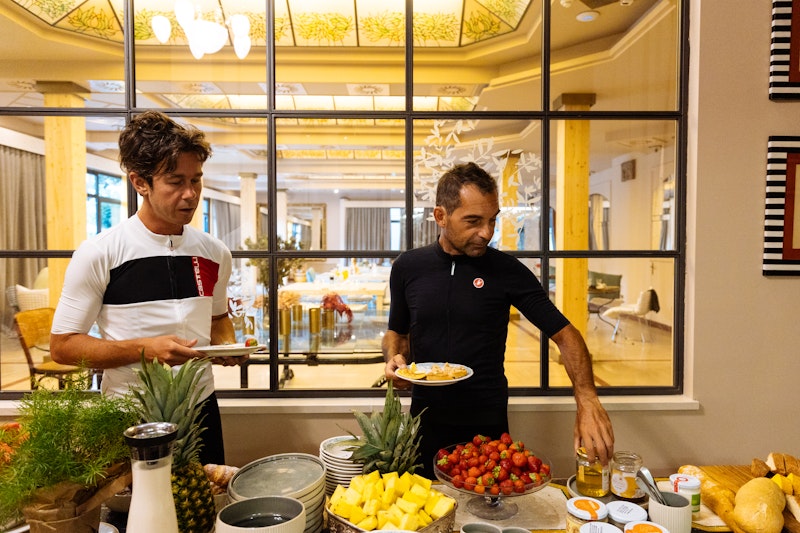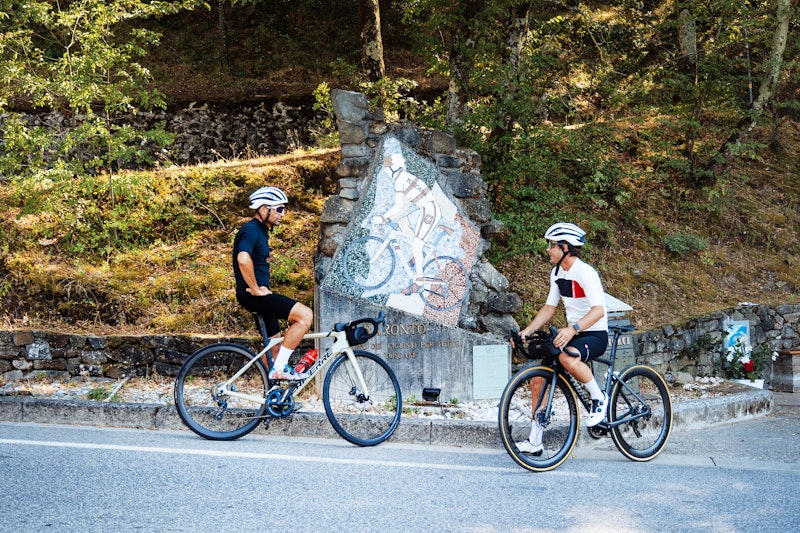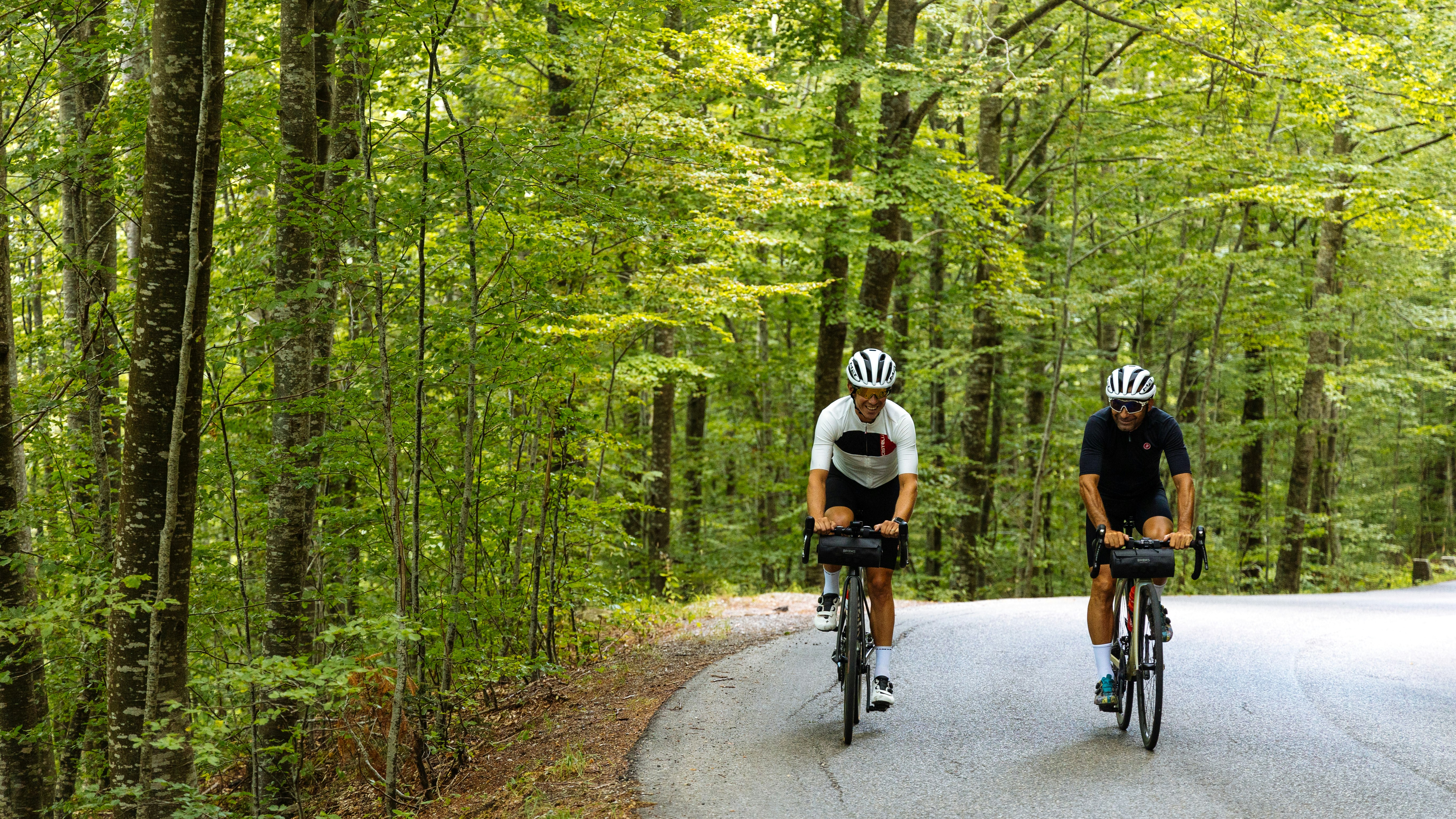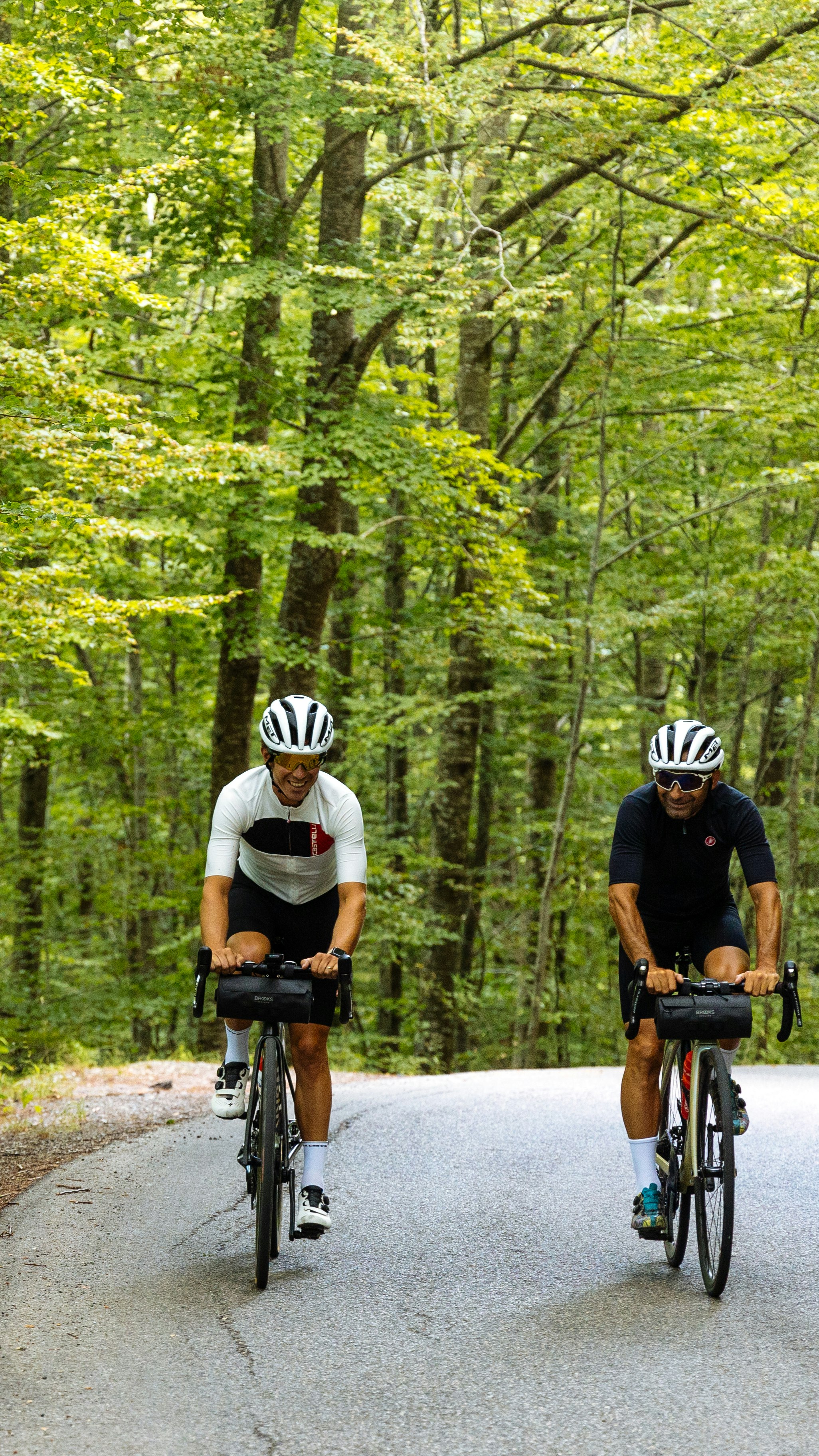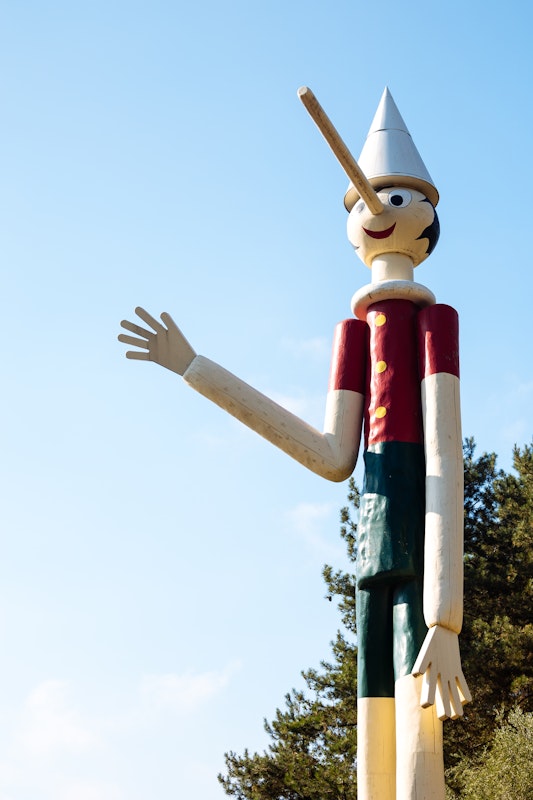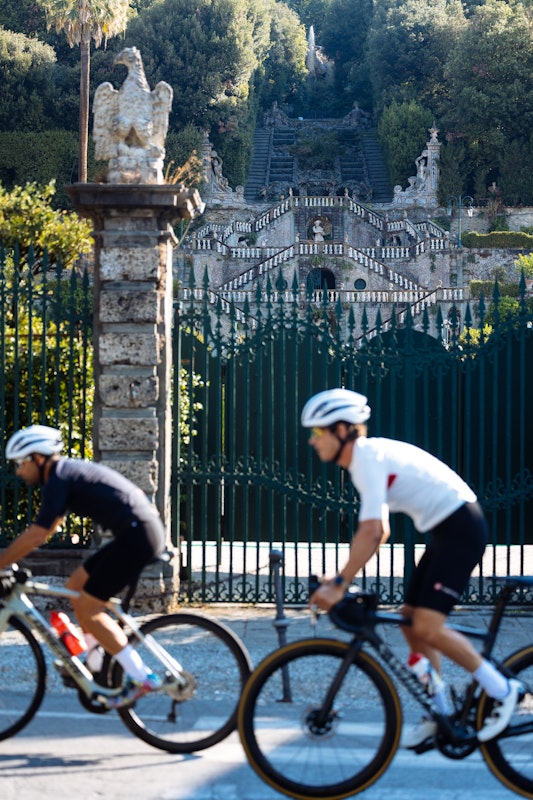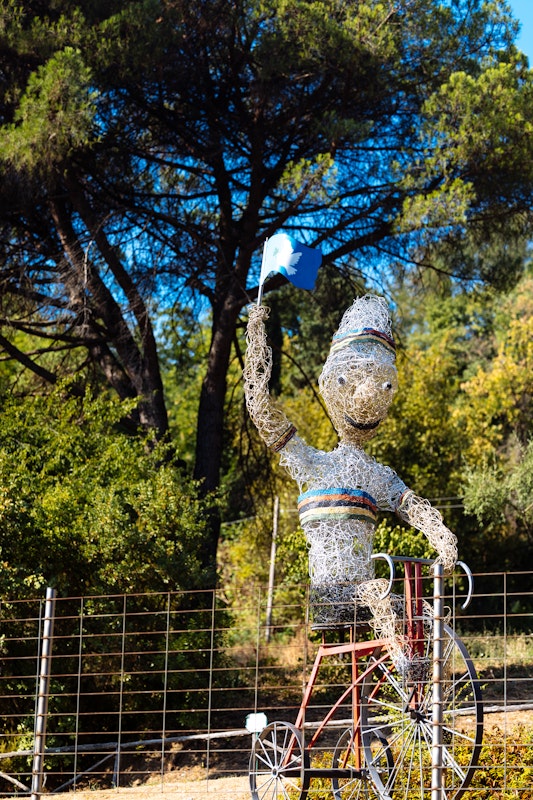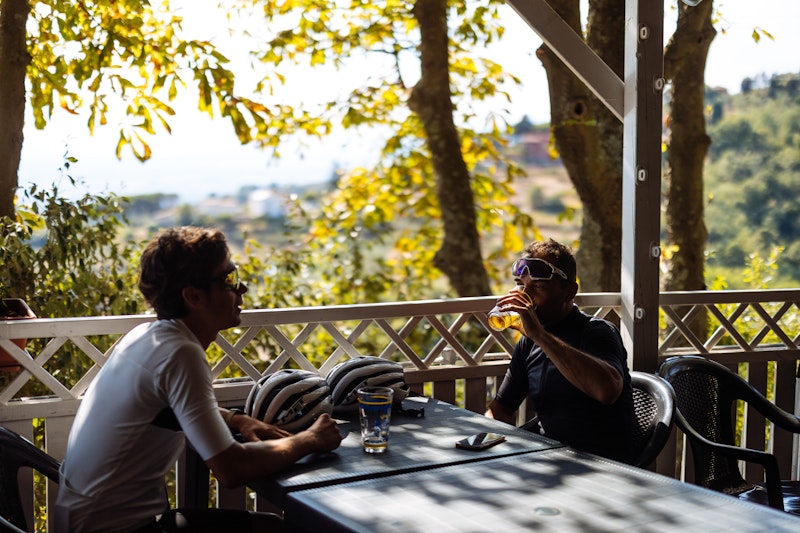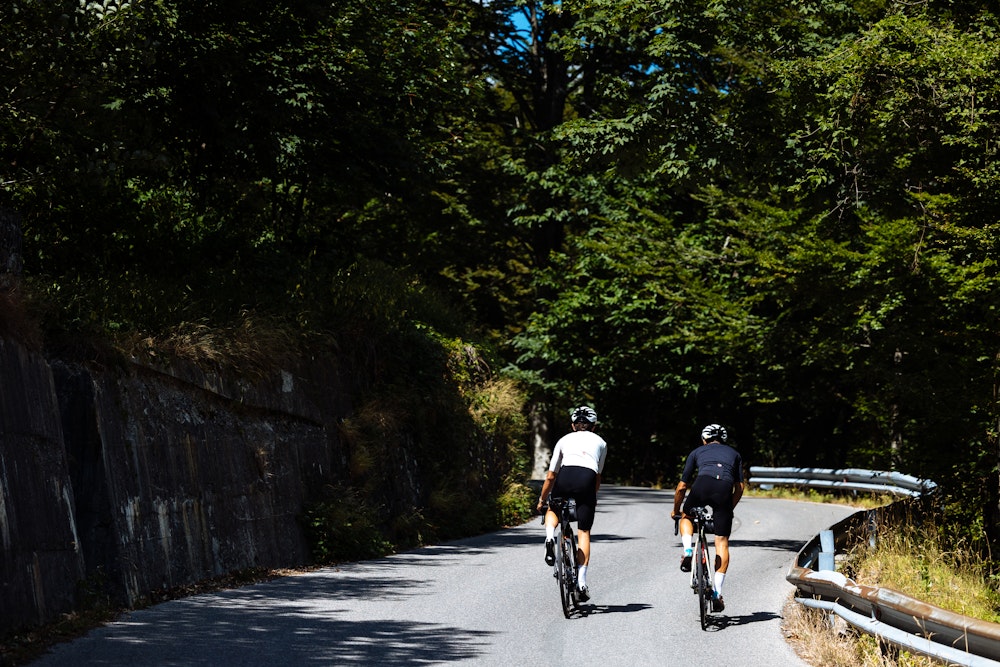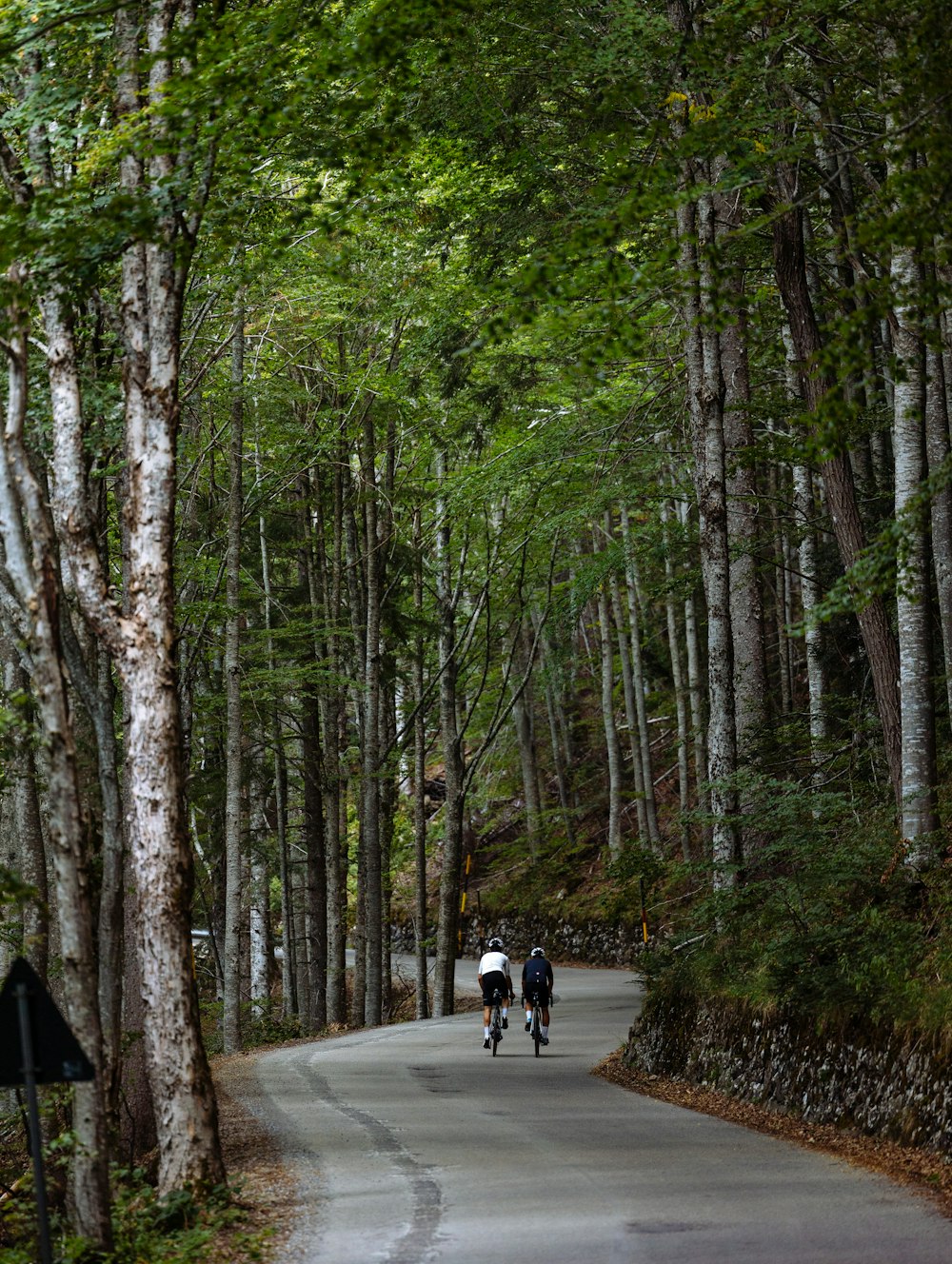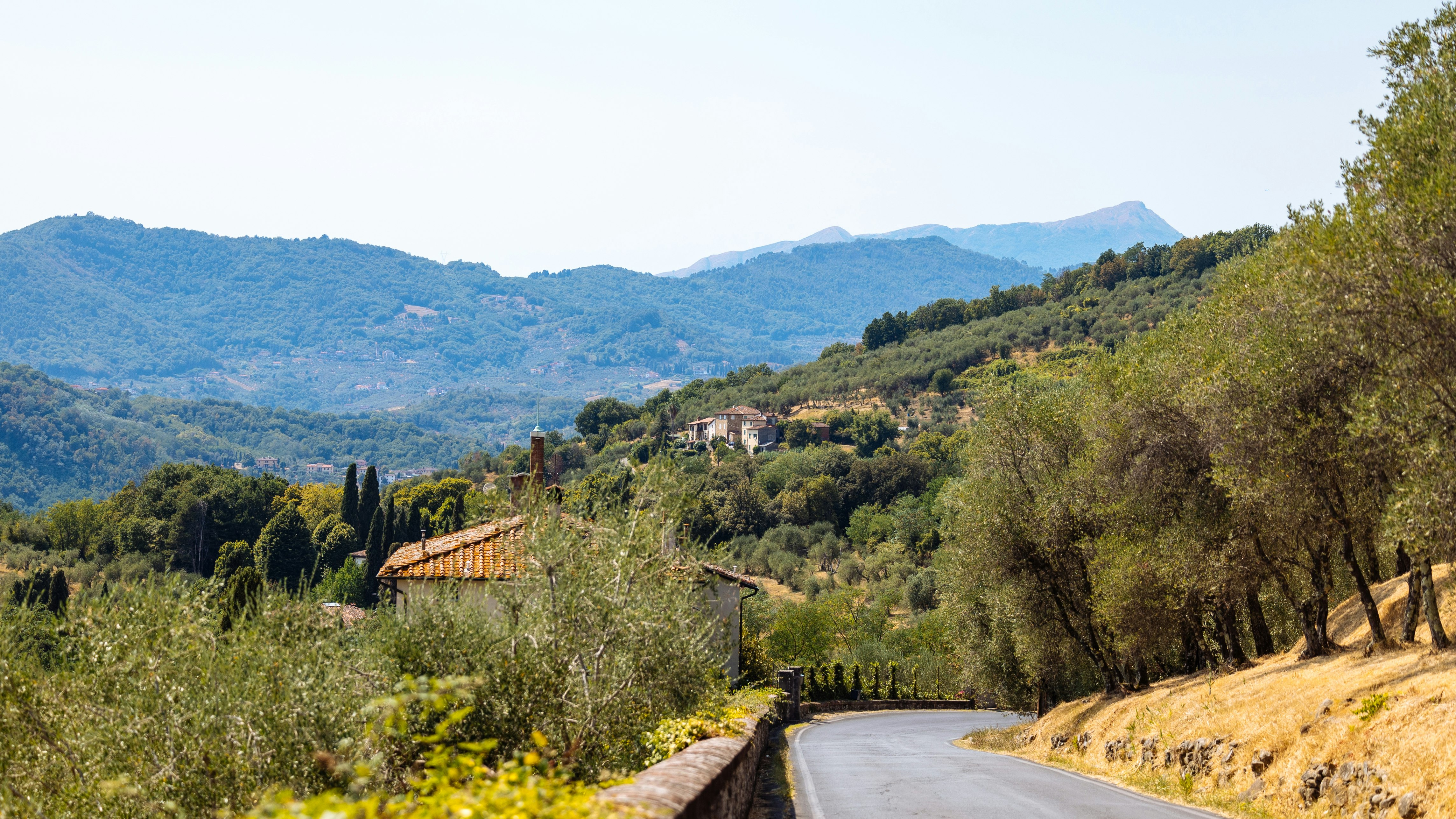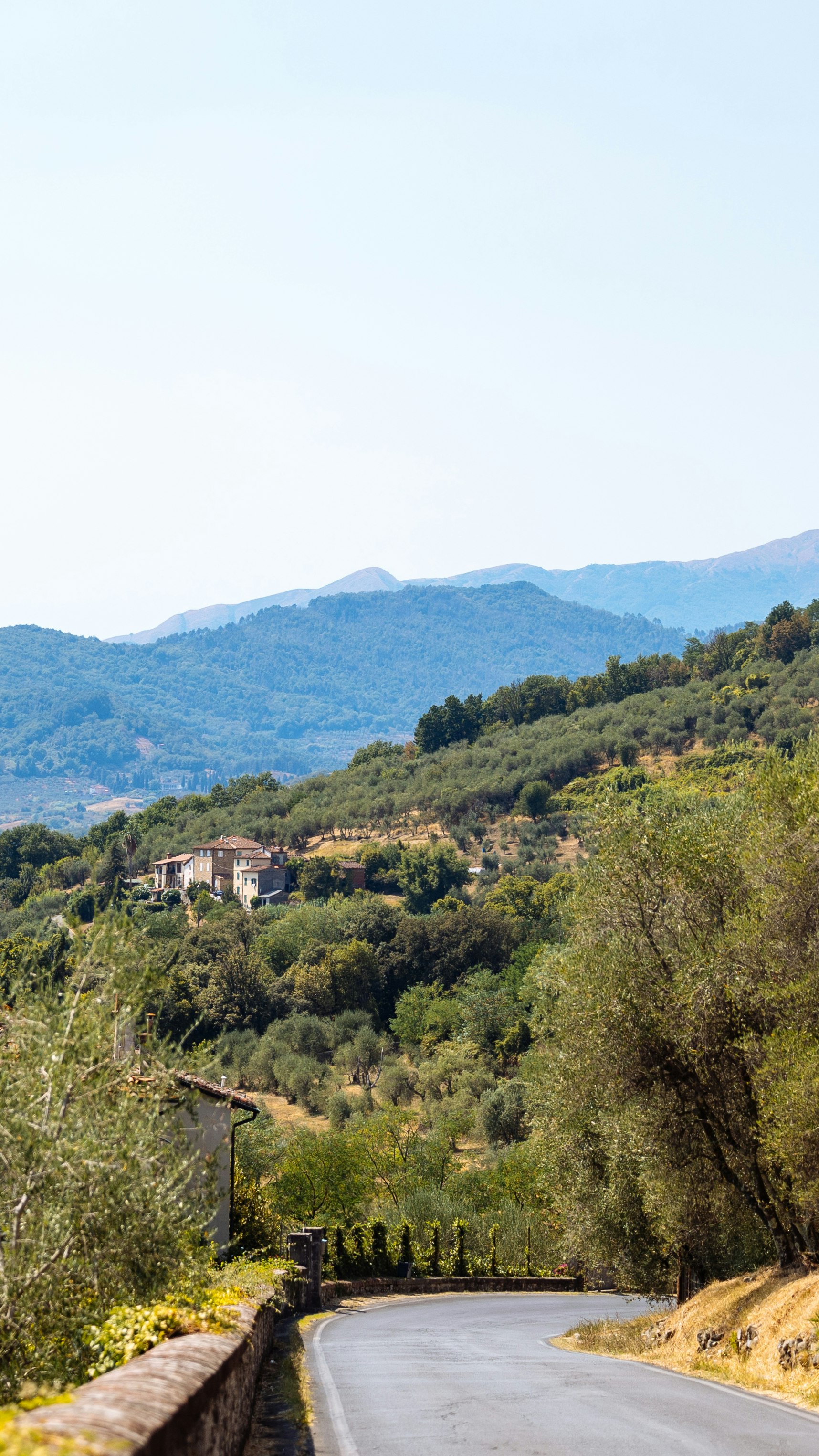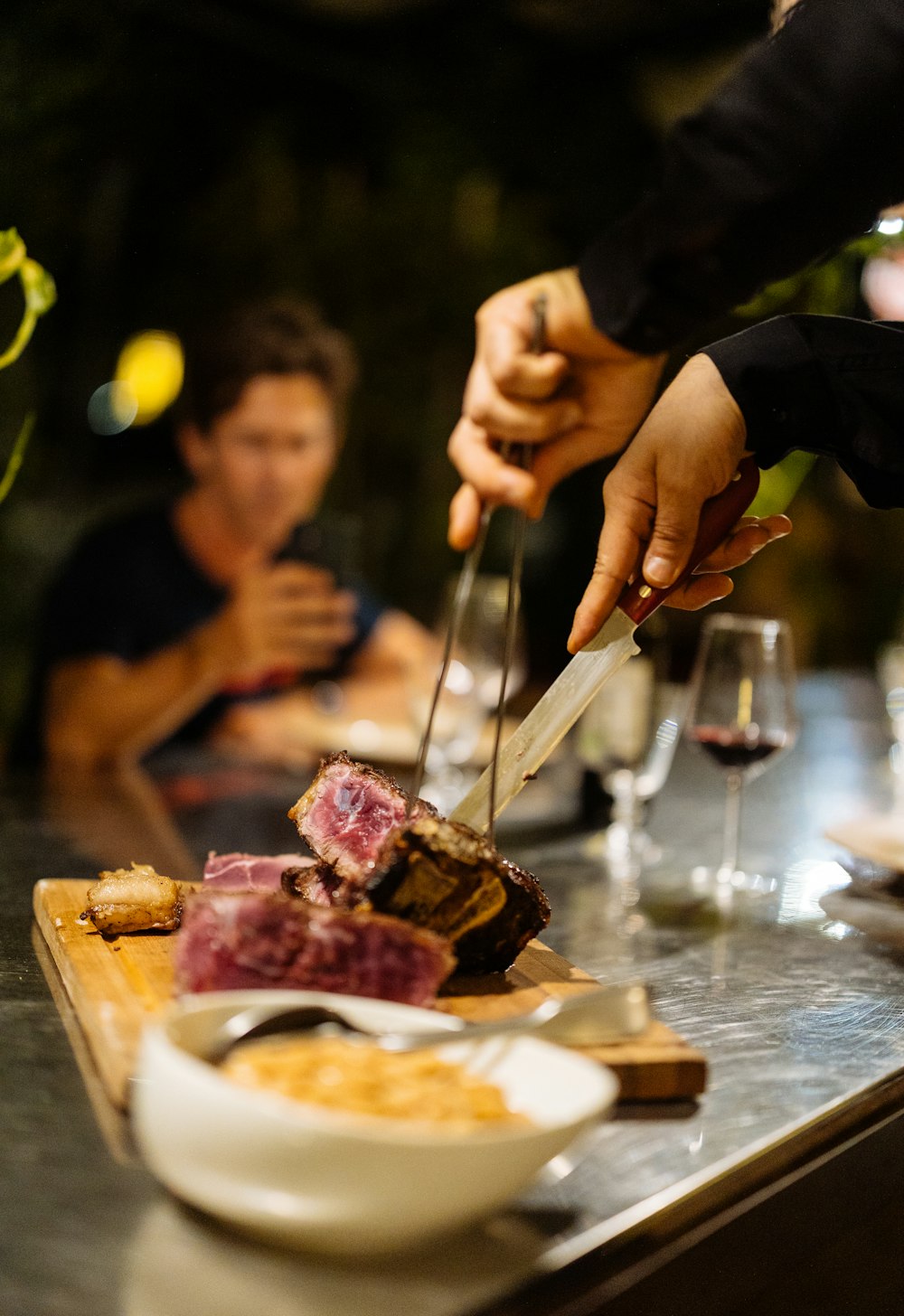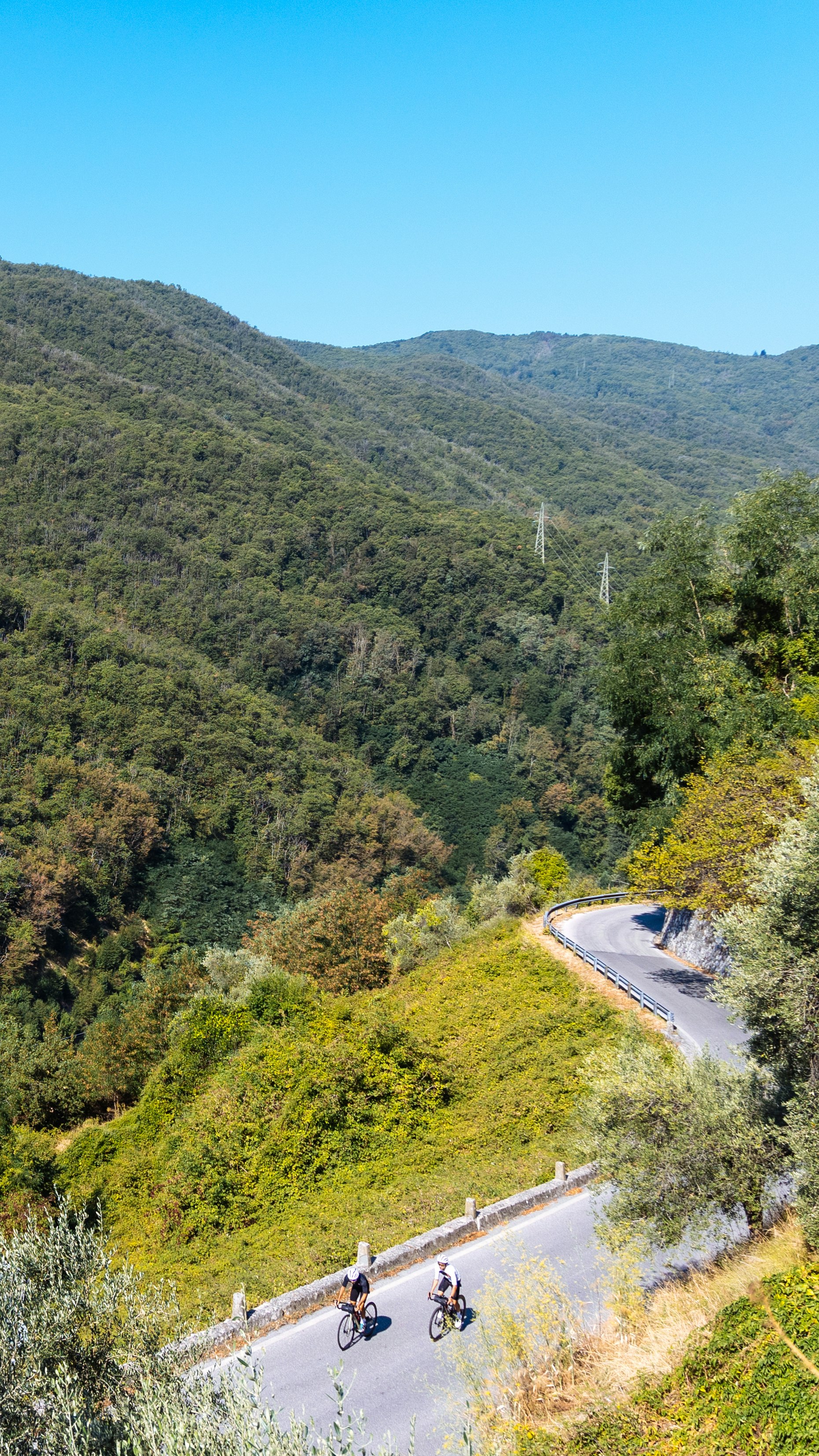
Another Tuscany
From Palazzo BelVedere, cycling between San Baronto and Abetone.
Elevation difference
4639 m
Total Length
267 km
Duration
2 Days
C
As does Riccardo Magrini, il Magro, a professional cyclist from the 1980s and now the narrative voice of contemporary cycling. He was born right here in Tuscany, near Montecatini Terme, the start and finish point of a marvellous double lap that we are going to tell you about. All you need is good legs, and the road will take care of the rest (we assure you, it’s really worth doing). Simply a marvel.
You can almost hear Magro’s voice, with its unmistakable timbre and friendly verve, as if accompanying us up and down the roads leading to San Baronto and Abetone.
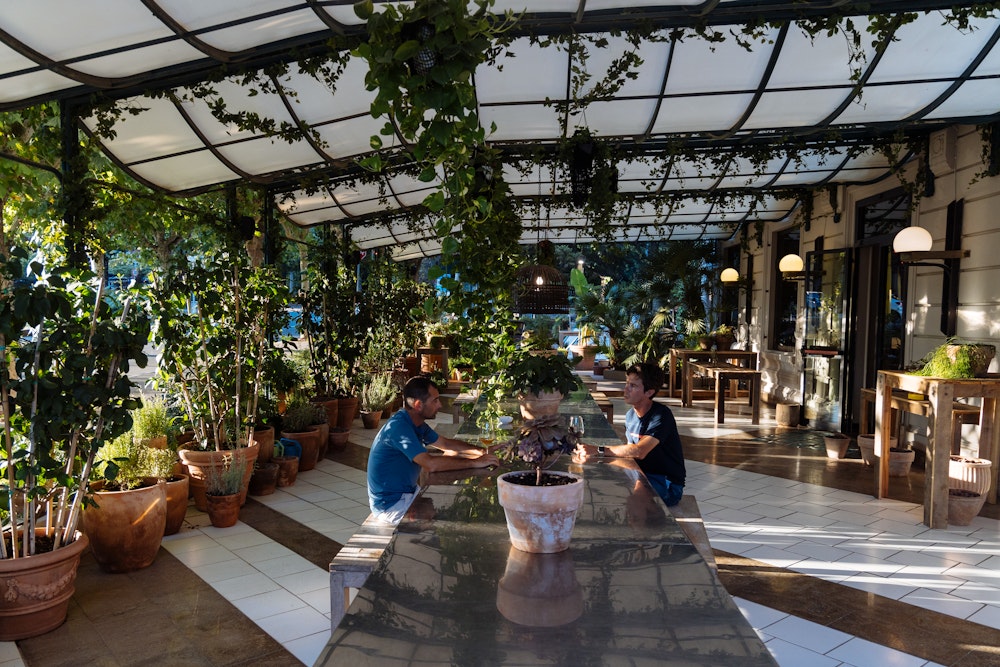
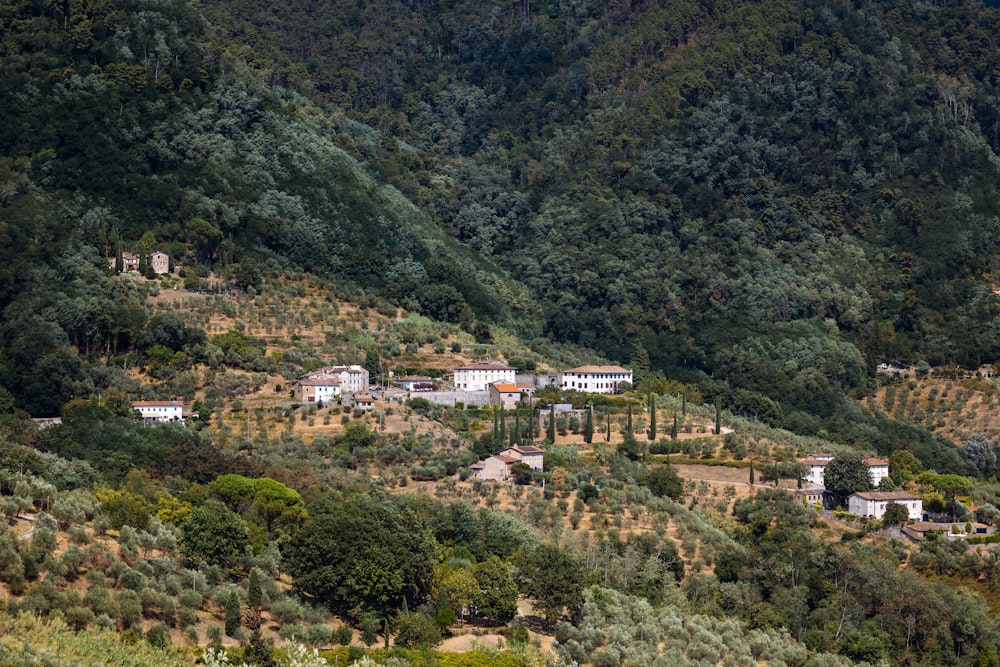
Montecatini Terme is the land of choice, for cycling at least. Magrini aside, it was on these roads that champions like Michele Bartoli and Mario Cipollini took their first pedal strokes.
And how can we forget Franco Ballerini? Born and raised at the foot of San Baronto. It was precisely San Baronto and its surroundings that taught the art of pedalling to promising young cyclists, who came from afar and were adopted by local cycling clubs to hone their craft. One name sits above all, Vincenzo Nibali.
Our two itineraries — one for each day — start and finish in Montecatini Terme, a Unesco World Heritage Site since 2021 and part of the circuit that journeys to the Great Spa Cities of Europe. The fulcrum of this experience is the welcoming Palazzo BelVedere, the historic residence recently returned to being a place of excellence and hospitality, thanks to the cultural taste and entrepreneurial vision of Simone Galligani.
Palazzo BelVedere is a haven and its breakfast is exquisite. I feast next to the Pipistrello lamps of Gae Aulenti, with their Belle Époque touch, and look forward to the ride ahead.
Eight o’clock in the morning. Everything is ready; tyres properly inflated, water bottle filled, food and tools in my pockets, with Graziano waiting for me outside (another hotelier friend of Simone’s). He will be my guide today. I say goodbye to Simone, shake hands with Graziano — who shows up on a crazy-fancy bike — and we begin. Bye Simone, see you later! That promised massage will be the icing on the cake. I can’t wait to fall into the skilful hands of the staff at Palazzo BelVedere’s spa. Pampering and relaxation. A privilege. A delight.
Today we embark on a 138 kilometre route that includes roughly 2,000 metres of elevation gain, a loop that winds between relentless, rolling hills and historic climbs. These include the San Baronto, part of the 2013 Road World Championships circuit in Florence — won by Rui Costa — and the subsequent Pinone, a hidden gem. The journey starts and finishes in Montecatini Terme, touching the three provinces of Lucca, Florence and Pistoia, and has its cardinal virtue in the scenic views it offers. When the sublime is combined with meditative pedal strokes, cycling becomes a unique sport capable of providing moments that convey a deeper meaning — beyond performance, pace and results.
There are those who claim, not wrongly, that the landscape does not exist, that it is not to be sought in the appearance of our surroundings, but is realised in the perception of the observer. After the first few pedal strokes necessary to escape the traffic, we reach Collodi, to which we will devote the attention it deserves in tomorrow’s tour, heading for Abetone.
From Collodi, we take the turning to Tofori and begin one of the most beautiful stretches of road in this region.
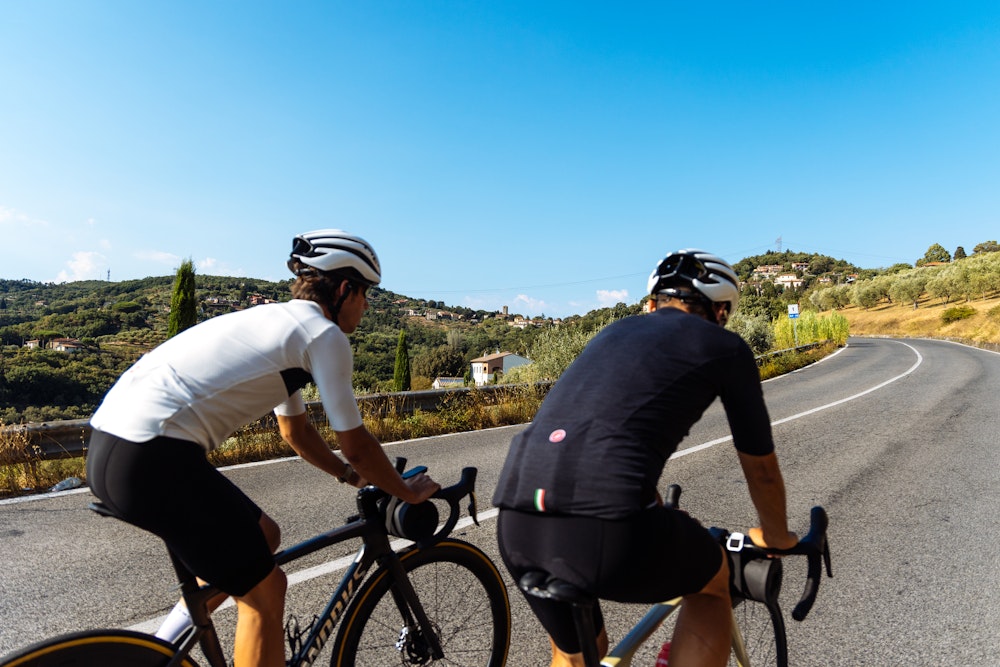
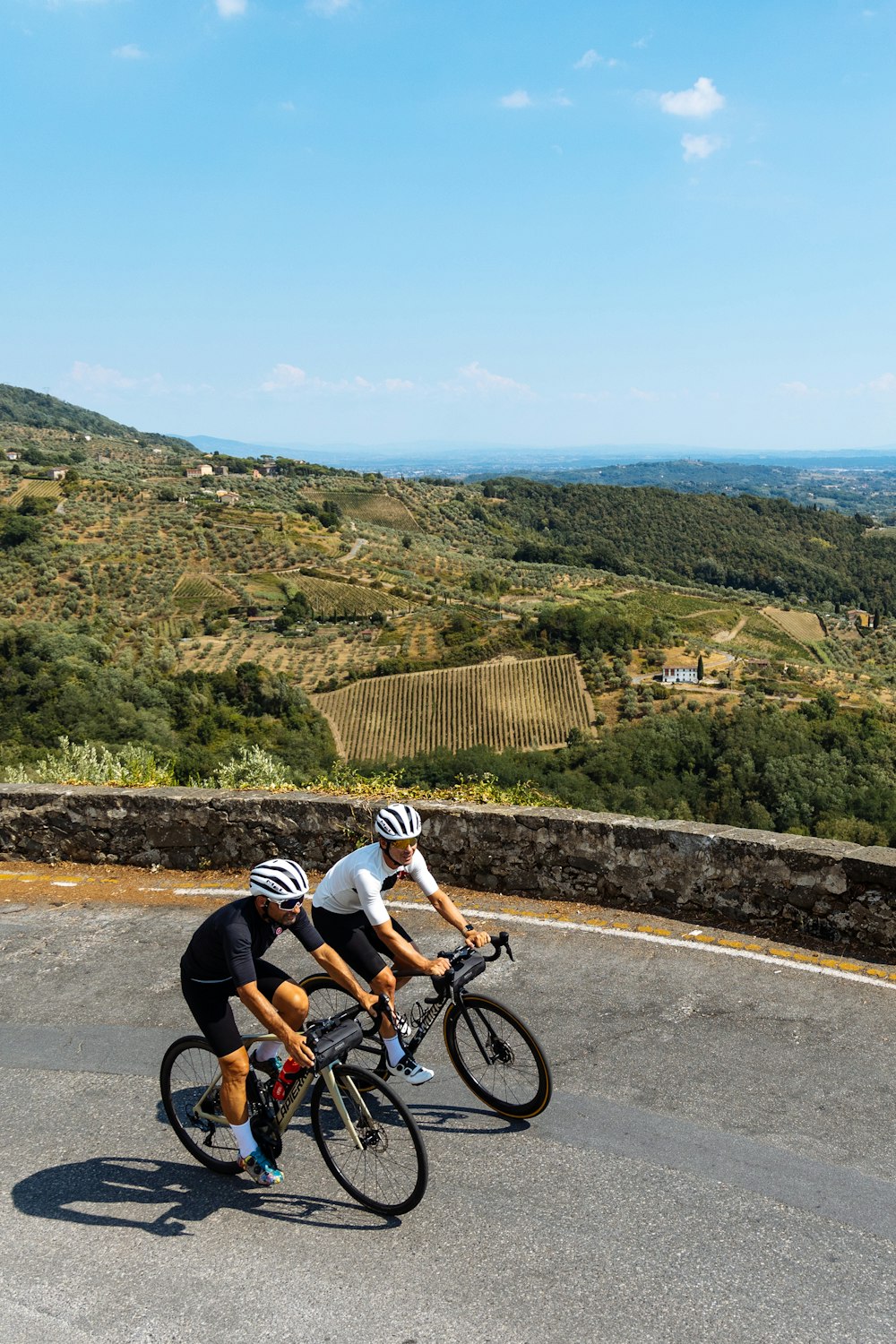
This tarmac ribbon cascades up and down between the sweeping peaks, and eventually we find confirmation that Italy is an incredible country, rich in masterpieces scattered across the landscape by history. In Pieve di San Gennaro, a hamlet nestled in the hillside, you can admire the terracotta statue depicting the archangel Gabriel, attributed to Leonardo da Vinci. Just like that. And then the enchanting village of Matraia; from here you can admire a sea of olive groves that paint the hills in a silver hue. All around are vineyards, and the horizon is enriched with holm oaks, cypresses and plane trees.
Finally, we reach Villa Reale in Marlia, where Napoleon’s sister — the Princess of Lucca — lived. She bought the villa and transformed it into what we still admire today, an authentic architectural jewel with a wonderful English garden. La bella Italia, which we should perhaps learn to experience more.
Now we descend to lap Lucca, then onwards to San Colombano and Santa Gemma, before tackling a small ascent in San Martino with ramps of 13%. We continue on a flat stretch past the village of Marginone and towards Ponte alla Ciliegia, before we ride to Chiesina Uzzanese, Casabianca and San Rocco to reach Lamporecchio. This is the starting point of the more challenging side of San Baronto.
The 277 metres of elevation are overcome in four kilometres, with an average gradient of 7% and a peak of 11%. We stop for an obligatory photo at the cyclist’s memorial stone and then descend to Vinci, the birthplace of the great Leonardo, the genius par excellence, to whom the design of the bicycle’s prototype is attributed (whether this be a legend or simply a joke).
And here comes Vitolini, where we start pushing again. Locals call it the “Pinone climb”, five kilometres that gain 246 metres of elevation, with an average gradient of 4.8%. We are rewarded with a stunning descent, followed by a flat stretch to Quarrata, Casalguidi and Cantagrillo, until the last climb of the day: the road to Le Rocchine. Now we only need to get our legs moving and pass Monsummano Terme to reach Montecatini.
An ice cream at Paolo Fornaciari’s is in order. The gelato is made just right, I assure you. Sitting in the small clearing next to the shop, thinking back over the ride just completed, one has a clear understanding, as if needed, that the job of a domestique is for tough people. Paolo, in a 16-year career spanning from 1992 to 2008, has ridden eleven editions of the Giro d’Italia, five Tours de France, two Vueltas a España, ten Milano-Sanremo and eleven Paris-Roubaix. Not bad at all.
For the record, the raspberry and lemon flavours are a sight to behold.
And now it’s time for poetry. Leaving Montecatini Terme at full speed to dodge the chaos, we quickly reach Pescia, home to a flower market of national importance, and then head towards Collodi — which needs little introduction. With my nose turned upwards, just like Pinocchio, I stand stunned for a few seconds as I admire Villa Garzoni from afar. For those who want to know more, the Villa is surrounded by an emerald garden, an 18th-century masterpiece that has remained almost intact to this day. This is where Angiolina Orzali worked as a young girl. She married Domenico Lorenzini and became the mother of Carlo Lorenzini, better known by the pseudonym of Carlo Collodi, the author of one of the most famous books in the world — The Adventures of Pinocchio. In any case, a visit to the garden is worthwhile, but today the bicycle calls.
For selfie lovers, a few metres ahead is the monumental statue of Pinocchio wearing the rainbow jersey. Much more interesting, in my opinion, are the old paper mills that you come across when the road finally starts to steepen and the cars disappear. Be mindful though, watch out for the few lorries on weekdays, as the road is narrow.
Today the paper mills are largely in ruin, authentic buildings that bear witness to a bygone era. Industrial archaeology, made of travertine and in need of water. It is no coincidence that these “mammoths” are located along the Pescia river, a stream that descends from the Apennines towards the Arno and then plunges into the Tyrrhenian Sea.
We are entering the so-called Svizzera Pesciatina, which we will also cross on the return journey, on the Marliana side near the village of Femminamorta. Now, however, is the time to enjoy. Not a difficult climb at first, as gentle as the trees that protect it. If you feel like picking up the pace, go ahead; the road is an invitation to push on. The landscape is hauntingly beautiful. When you climb, it is always like this. Everything changes. For the better.
The effort begins to bite into your calves, and in some sections we are barely below 10%. We enter and exit the forest, and from certain bends you can admire the entire valley. Villa Basilica, the parish church of San Jacopo, with its mediaeval tower, and here we are in Boveglio. We are at an altitude of 745 metres. From here begins a long descent towards Bagni di Lucca, surrounded by lush greenery. Traffic is a distant idea.
Here, on the edge of the Garfagnana, the landscape is both gentle and unforgiving. A long blanket of variegated vegetation rises up to the ridge of the Tuscan-Emilian Apennines. And it is there that we are heading. From Bagni di Lucca to La Lima is about 20 kilometres, without any particularly difficult terrain, just the possibility of traffic on public holidays, especially in summer.
From La Lima we climb up towards Cutigliano, a village that deserves a stop thanks to its superb restaurants, but we have other commitments today. There is no fooling around. To avoid the stretch of state road that goes to Abetone, we take a secondary road in the direction of Pian degli Ontani, continuing to Pian di Novello. It is a challenging 15 kilometres, with pitches of 13% and not much chance to catch our breath. We pedal through the undergrowth, through the enchanting landscape, and climb to an altitude of 1,300 metres where the route joins the Abetone state road again. The pass is just over three kilometres away, there is a 9% gradient and a slight descent, which we reach through centuries-old beech woods.
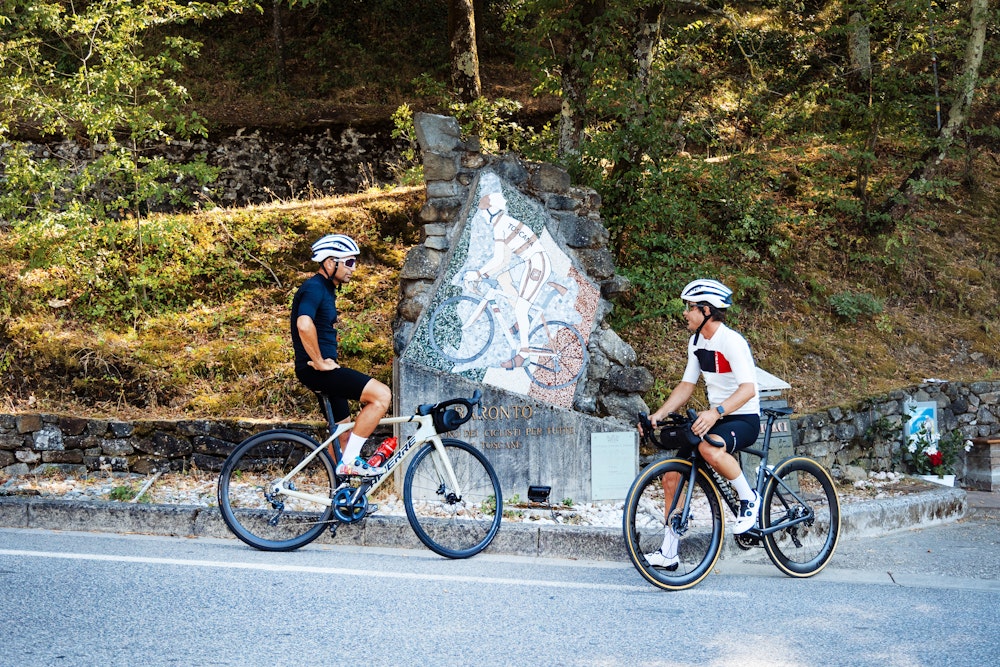
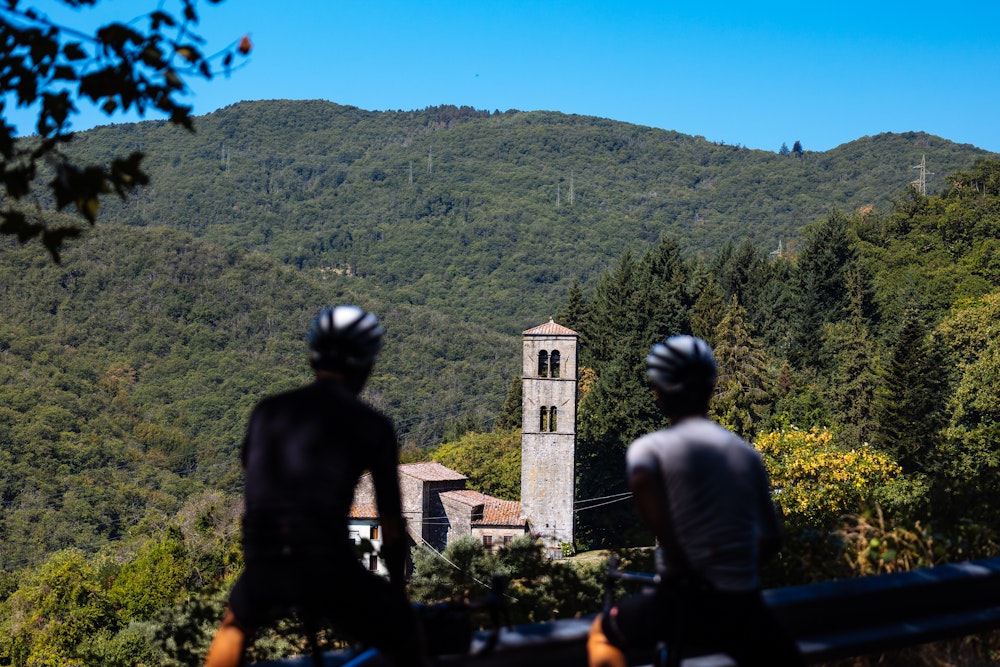
The Abetone nature reserve is a protected forest area of the Tuscan region, established in 1977. It occupies an area of 584 hectares in the province of Pistoia, housing the Abetone Forest Botanical Garden.
The Giro is at home here: it has hosted a stage finish five times. The first was legendary; it was the 29th May 1940 on a gloomy day that saw torrential rain and foreboding thunder. Racing, like a thunderbolt, came a rider that nobody yet knew, and from the side of the road they could not even call him by name. All they knew was the Legnano jersey, it was a young domestique of Gino Bartali racing the Giro for the first time. He arrived alone at the finish line in Modena with a lead of over three minutes to his pursuers, taking the pink jersey in the process (it would stay on his shoulders until Milan). That thunderbolt was Fausto Coppi, and it gives one a certain thrill to ride on the same roads that baptised the legend of Il Campionissimo.
That thunderbolt was Fausto Coppi, and it gives one a certain thrill to ride on the same roads that baptised the legend of Il Campionissimo.
Just enough time to take a look at the Emilian side of the Apennines, and catch a glimpse of the mayhem of the over-man-made Po Valley far away, then it is time to turn the bike around and head downhill to La Lima. Here we turn left and then immediately right to take via del Granduca to reach Prunetta, leaving the village of Piteglio to our right. The road up to Prunetta rises gradually, then alternates between downhill stretches and the classic rolling Tuscan hills, or Mangia e Bevi. Ups and downs. The dense vegetation of the Abetone woods is already a memory, and here everything has an almost Mediterranean flavour.
Back in Montecatini Terme, Simone Galligani greets us with his usual, proverbial smile. A light breeze caresses the leaves of the plants surrounding the building. Whenever we want, a soothing massage awaits us. How could we refuse? Here, the concept of well-being goes beyond the usual clichés, because it is the sense of good hospitality that prevails over everything.
Thank you Simone, thank you Graziano. I can’t wait to come back and ride around here again, to discover what beautiful secrets the roads have to offer. Roads that provide a certain tonic, making you feel at peace with the world around you.
Texts
Francesco Ricci
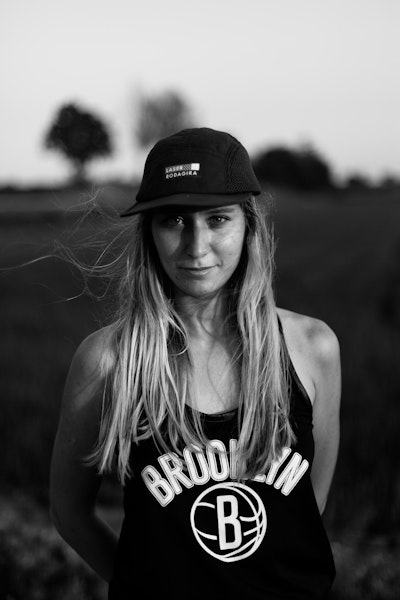
Photos
Chiara Redaschi
Cycled with us
Elia Paoletti, Gabriele Pezzaglia
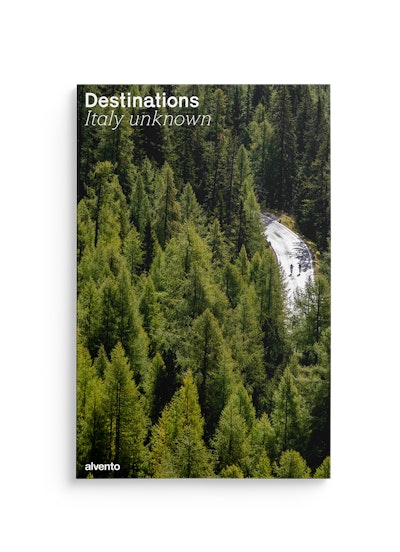
This tour can be found in the super-magazine Destinations - Italy unknown / 1, the special issue of alvento dedicated to bikepacking. 13 little-trodden destinations or reinterpretations of famous cycling destinations.
